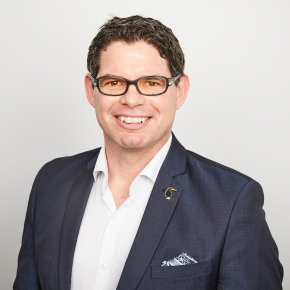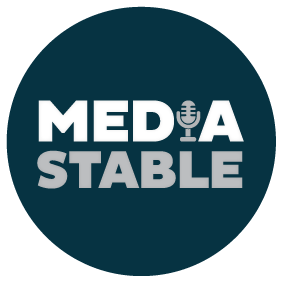Craig Johns – Kochie’s Business Builders
Workplace culture and leadership expert – CEO & Managing Partner of Speakers Institute Corporate
Is burnout a choice?
If you can’t shake the brain fog and your bones feel like lead, it’s probably more than just tiredness… you might be suffering from burnout, explains Craig Johns, workplace culture and leadership expert, but is burnout something you can avoid?
The World Health Organisation, Gallup, American Medical Association and other reputable organisations have completed research that shows there’s a real issue with burnout in our society. but I believe that burnout is totally avoidable.
It’s time for employers to stop placing the responsibility of burnout on the employee, and employees need to stop blaming their employer. Because burnout is a choice.
Burnout is a syndrome conceptualised from chronic workplace stress that has not been successfully managed. It’s both an individual and company issue, not one or the other.
Why burnout is a choice
Let me explain what I mean by burnout being a choice.
We decide to work longer hours, at a faster pace, not take breaks, remain in toxic environments or with a manager who micromanages us. People also choose whether to stay in relationships, start a family, take on too many activities, train too hard when they’re tired, watch too much Netflix or scroll late into the night on social media. It’s also our choice to decide what we eat, how often we exercise, and whether to let our brain relax and allow our body to rest and recover with adequate hours of sleep.
And just in case you haven’t come to the realisation yet… no human can do it all.
Workplace burnout is often misdiagnosed when people might just be exhausted, tired or stressed. According to WHO’s definition of workplace burnout, there are three components:
- Feelings of energy depletion or exhaustion.
- Increased mental distance from your job, or feelings of negativism or cynicism related to it.
- Reduced professional efficacy.
There are many reasons why people can find themselves diagnosed with workplace burnout or a company creates an environment that leads to a higher percentage of people achieving burnout. In every situation, it comes down to choices.
My experience with burnout
Several weeks ago, I found myself operating on about 10 per cent of my normal capacity.
Being a first-time parent with disrupted sleep patterns and co-owning and leading a global start-up that has seen accelerated growth had suddenly started to take its toll. Then, take into consideration working from home, working away from home, owning a home with the pressures of inflation on finances and so on…
Struggling to focus and find the energy to do anything, I noticed myself becoming cynical, having negative thoughts, being highly critical and focusing on obstacles rather than opportunities.
I’d been observing these changes happen throughout the year. Hoping that I could get through the tiredness, the brain fog and negativity. But sometimes, even when we’re aware of something, it doesn’t mean we always take action.
It took two of my closest friends and colleagues to sit me down and ask the question, “how are you?” to make me realise I needed to do something. The conversation that took place with both of them and the recommendations they shared showed me that I needed to take control and make a decision. Why? Because burnout is a choice and it was a choice I was making.
So I made a choice to take some down time on a short trip to Melbourne and make sleep a priority. It’s definitely not enough to bring me back to 100% capacity, but it would get me back to operating at 60 per cent or more, and get me through to Christmas where I had extended time off to recharge for 2024.
Are you tired?
The problem with fatigue is that it’s very hard to detect over a period of time.
As an athlete you have a strong trigger to let you know when you need to rest and recover. You aren’t as fast, strength reduces, you react more slowly and make mistakes. It’s mainly physical and you notice it. In the corporate world, unless you have a physical job or you face a catastrophic event, it’s mental fatigue. Your mental fatigue reduces so slowly that your body adapts to it and you don’t know what’s happening until it’s too late.
Our bodies thrive on small doses of stress and until you remove it, your body thinks everything is okay. Ever fallen sick as soon as you go on holiday? That’s why.
We must proactively plan and manage our energy and stress over time, to enhance our performance and productivity at work and in our personal relationships. It starts with learning how to schedule, focus and invest in your energy.
Managing your workload
If you’re the boss, make sure you’re aware of your staff’s workload, keep an open door policy on it and bring in extra help in the form of temporary staff when people feel overwhelmed. If you’re an employee or a manager, make sure that you keep the boss informed of workloads and when you might need extra help to make staff feel supported. Having open conversations about workload and stress with your manager, and the boss being in the loop, both go a long way to helping people feel actively supported in the workplace.
My advice is to schedule your rest, just like you schedule your meetings. Plan your day, week, month, year and career with a 3:1 work-to-recovery ratio, and you’ll avoid burnout.
Focus your energy through prioritisation and deciding what or who is the most important.
Invest in your energy by creating boundaries, developing routines and removing three things every time you add something new to your day or life.
So instead of pretending we’re okay when we’re feeling overwhelmed, let’s openly communicate when our workloads are unmanageable and our targets are unachievable. Because it’s the responsibility of both employer and employee to be proactive in preventing burnout from happening.
https://www.kochiesbusinessbuilders.com.au/is-burnout-a-choice/
